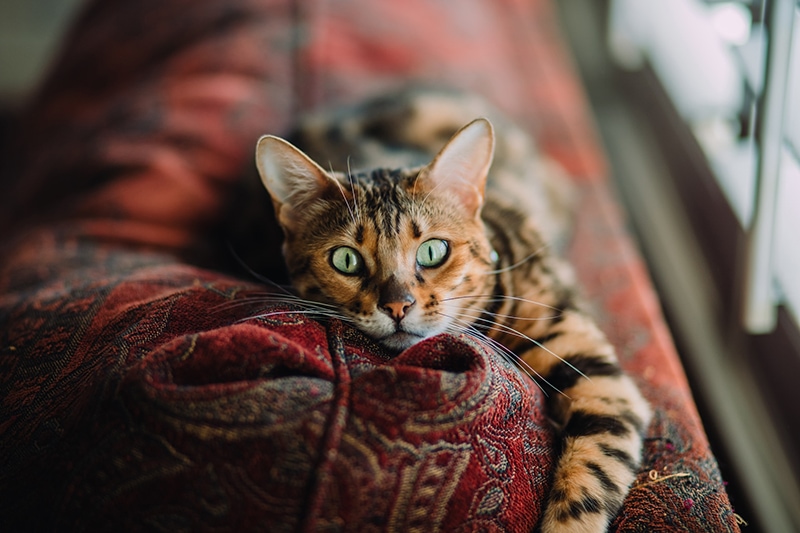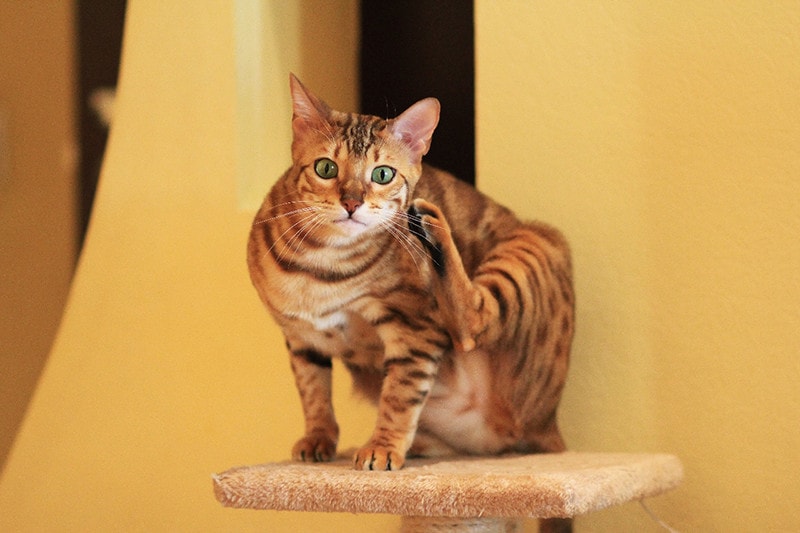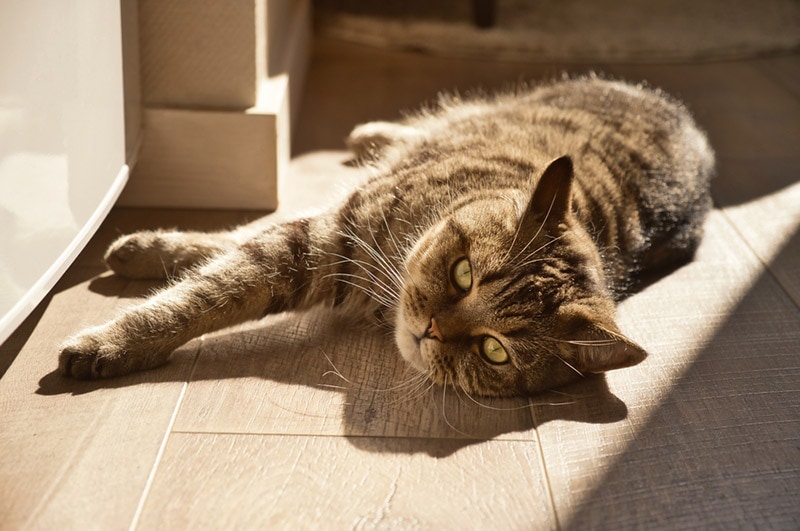How to Keep Cats Warm in Winter: 7 Vet-Aproved Ways
Updated on

Regardless of our best intentions, it isn’t possible to keep all cats indoors, even on the coldest days in the winter. Some cats are feral and won’t tolerate being indoors, and other people can’t keep indoor cats for one reason or another.
Knowing the things you can do to make winter safer and warmer for outdoor cats will help you be better prepared to meet their needs, regardless of why they’re outdoors.
How to Keep Cats Warm in Winter
1. Provide a heated bed.
Commercially made heated cat beds are a great way to keep your cat warm in the winter. These beds are usually made to produce minimal heat until they are in use. This saves energy and greatly reduces the fire hazard that would otherwise be associated with leaving a heated item turned on all the time.
These beds are usually made to be used only in a covered or enclosed space, so you may have to make arrangements to keep them out of the elements. Otherwise, you may end up with a heated bed that stops working halfway through the winter season.
2. Create an insulated house.
Making an insulated house for your outdoor kitty is an easy project you can achieve in a short time with just a few supplies. All you need is a couple of large plastic totes, a Styrofoam cooler, a box cutter, and a heated bed, straw, or blankets. You’ll simply cut out an entrance in the side of each tub and the Styrofoam, stack them in an alternating fashion, and then fill them with bedding. Ideally, this house should be placed out of the elements to maximize warmth and safety.

3. Provide bedding.
By providing bedding for your outdoor cat, you will help them feel comfortable and cozy. It’s important to select the right type of bedding for the situation, though. Sometimes, people provide hay or blankets with good intentions, but these are not good options, especially when there is a chance they may get wet.
Straw is the best option because it tends to be insulating and breathable. Blankets and hay can absorb large amounts of moisture, which means they don’t insulate well, and they can actually pull body heat from your cat, making them stay too cold.
Blankets are a great option for well-sheltered, insulated, or indoor places. You can even consider giving your cat a warm blanket fresh from the dryer a few times per day to help them stay warm. However, straw is the way to go for outdoor spaces with minimal shelter from the elements.
4. Give your cat a healthy diet.
During the winter, your cat may benefit from a little extra food to help maintain body weight and body heat. You can consider supplementing your cat’s diet with omega-3 fatty acids to help maintain the health of their coat and skin, which will help them stay warm as well. A healthy skin and coat will prevent hair loss and irritation that can lead to your cat having difficulty maintaining body heat. Speak with your cat’s veterinarian about the best diet for your outdoor cat.

5. Keep your cat active.
If your outdoor cat allows you to interact with them, try playing with them a few times per day. Get your cat up and moving with a high-energy game. This may help increase their body heat level, and they will feel warmer. By getting their blood pumping, your cat may stay warm longer than they would under other circumstances.
6. Try to get your cat indoors.
If you can manage it, get your cat indoors, at least during the colder parts of the winter. If your cat is opposed to being inside of a house, try to set up some indoor shelter that your cat is more likely to take to. This can be a garage with the door cracked slightly to allow your cat to come and go freely. A shed or barn may also work. This will at least provide basic shelter from the elements, even if it isn’t warm.
Make sure that any indoor space you set up for your cat is safe. Often, sheds and garages are homes to dangerous chemicals like pesticides, rodenticides, and antifreeze. Make sure any dangerous chemicals, as well as things like mousetraps, are put up and out of reach of your cat.

7. Consider a safe space heater.
Space heaters are almost never the solution when it comes to outdoor cats. If you can set up an indoor or sheltered space for your cat, though, some space heaters may be just what you need to heat the space up to a cozy temperature.
Ceramic and oil-filled heaters are some of the safest options for heating a space for your cat. Ideally, you should select a heater that has an auto-shutoff feature. This feature will shut the heater off if there is a malfunction or if the space or the heater begins to overheat. Also, anytime you are using a space heater, you should make a point to check it a few times a day to ensure it is functioning safely and properly. Don’t forget to keep those electric cords out of reach as well.
In Conclusion
If you have outdoor cats, there are some great options to warm them up during the coldest winter days. Most of these options are affordable and accessible, regardless of your living situation or budget.
If you’re caring for feral cats in your neighborhood, you can at least set up some safe, insulated houses to keep the cats warm. Just remember to use straw anytime you are dealing with a space that may get exposed to the elements. This will maintain the cats’ safety by providing a breathable, insulated space that doesn’t stay damp and pull body heat.
Finding ways to keep your outdoor cat warm throughout the winter may help ensure they don’t seek out unsafe spaces for shelter, like car engines. You’ll be working to keep them safe, happy, and cozy during the cold months.
See Also:
Featured Image Credit: hitryuga, Shutterstock













